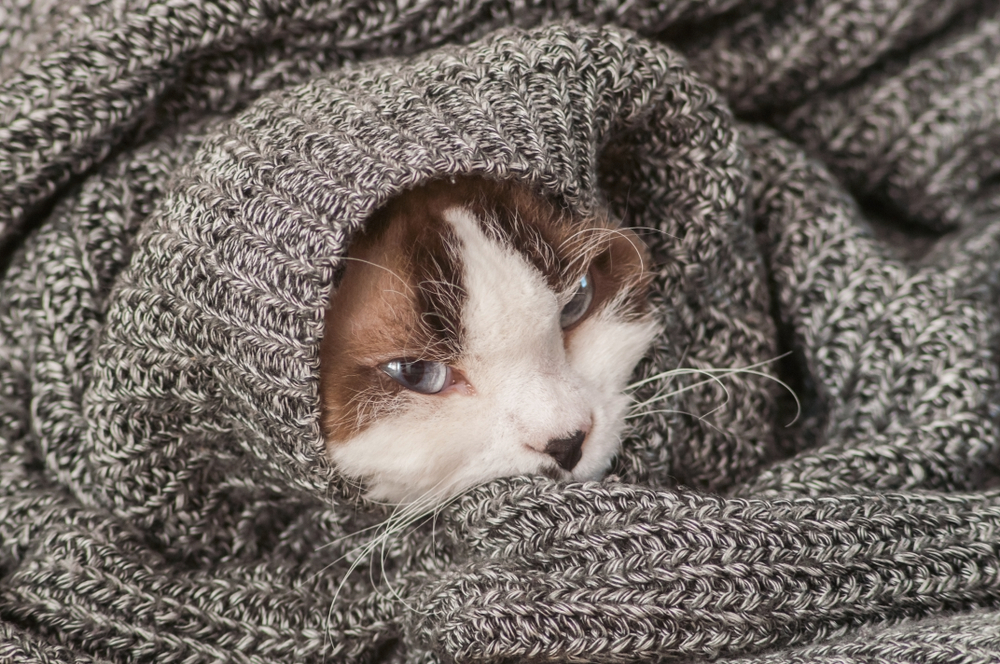Cats are usually skilled at hiding discomfort, so it can be tricky to notice signs of nausea. Being able to spot the symptoms early is essential for addressing any potential issues before they become more serious. Here are some key warning signs and tips on how to manage cat nausea
9 Warning Signs of Cat Nausea
1 – Loss of Appetite: Cats with nausea often eat less or refuse food altogether.
2 – Excessive Drooling: Nausea can lead to increased saliva production, causing drooling.
3 – Lip Licking: This can indicate queasiness, especially if done frequently.
4 – Vomiting: One of the more obvious signs, frequent vomiting can be a red flag.
5 – Lethargy: Cats feeling nauseous may act more tired or withdrawn.
6 – Diarrhea: Digestive upset often accompanies nausea in cats.
7 – Frequent Swallowing: This may signal an attempt to hold back vomit or cope with excess saliva.
8 – Gagging or Dry Heaving: These symptoms can indicate an upset stomach.
9 – Change in Behavior: Cats with nausea might act more irritable or avoid people.
Top Reasons Cats Experience Nausea and How to Help
Cats are known for their independent nature and stoic behavior, but they can experience nausea just like humans. Nausea in cats can be a sign of an underlying issue that needs attention. Here are the most common reasons cats experience nausea and some tips on how to help.
1 – Hairballs
Cats, especially long-haired breeds, often groom themselves, ingesting hair that can lead to hairballs. These hairballs can irritate the stomach and cause nausea.
How to Help
Regular Grooming: Brush your cat regularly to reduce shedding and hair ingestion.
Specialized Diets: Look for food designed to help with hairball control, containing fiber to aid digestion.
Hairball Remedies: There are gels and treats available that help pass hairballs through the digestive system.
2 – Eating Too Quickly
Some cats eat too quickly, which can cause them to swallow air and irritate their stomachs, leading to nausea.
How to Help
Slow Feeders: Consider using a slow-feeder bowl or puzzle feeder to encourage your cat to eat more slowly. Frequent, Smaller Meals: Provide smaller, more frequent meals throughout the day to prevent overeating and reduce the likelihood of nausea.
3 – Food Sensitivities or Allergies
Cats can develop sensitivities or allergies to certain ingredients in their food, such as grains, dairy, or specific proteins.
Cats can develop sensitivities or allergies to certain ingredients in their food, such as grains, dairy, or specific proteins.
How to Help
Switch to Hypoallergenic Food: Consult your veterinarian about hypoallergenic diets or limited-ingredient foods to identify and eliminate potential triggers.
Avoid Table Scraps: Don’t feed your cat human food, as many ingredients are not suitable for their digestive system.
4 – Gastrointestinal Issues
Conditions such as inflammatory bowel disease (IBD), infections, or parasites can cause nausea in cats. These conditions affect the stomach or intestines, leading to discomfort and vomiting.
How to Help
Veterinary Diagnosis: If nausea is persistent, take your cat to the vet for tests to identify any gastrointestinal issues.
Medication and Diet: Your vet may prescribe medications or recommend a special diet to manage the condition and reduce nausea.
5 – Stress or Anxiety
Stressful situations, such as moving, changes in routine, or the presence of new pets, can cause a cat’s stomach to become upset, leading to nausea.
How to Help
Create a Calm Environment: Ensure your cat has a quiet, comfortable space to retreat when feeling stressed.
Pheromone Diffusers: Consider using feline pheromone diffusers (like Feliway) to calm your cat and reduce stress-related nausea.
Routine: Maintain a consistent routine to help your cat feel secure and less anxious.
6 – Medical Conditions
More serious conditions, such as kidney disease, liver problems, or pancreatitis, can cause nausea as a symptom.
How to Help
Regular Vet Check-ups: Regular veterinary check-ups are crucial for detecting underlying health problems.
Prompt Treatment: If a serious condition is diagnosed, follow your vet’s treatment plan to manage the condition and alleviate nausea.
7 – Motion Sickness
Just like humans, cats can experience motion sickness when traveling in a car or other moving vehicle, leading to nausea.
How to Help
Travel with Care: Make sure your cat is safely confined in a well-ventilated carrier during travel.
Comfort and Reassurance: Offer familiar scents, like a favorite blanket or toy, to soothe your cat during travel.
Consult Your Vet: In severe cases, your vet might recommend medication to prevent motion sickness.
8 – Toxins or Poisons
Cats may ingest something toxic, like plants, chemicals, or spoiled food, which can cause nausea and other symptoms.
How to Help
Prevent Access to Toxic Items: Keep hazardous substances, including certain houseplants (like lilies), away from your cat.
Act Quickly: If you suspect your cat has ingested something toxic, contact your veterinarian or an emergency pet poison hotline immediately.
When to See a Vet
If your cat’s nausea is persistent, accompanied by other symptoms like vomiting, diarrhea, lethargy, or changes in appetite, it’s important to seek veterinary care right away. A vet can help determine the cause and recommend the best treatment.
Treatment Tips
Monitor Hydration: Dehydration can worsen nausea, so ensure your cat is drinking enough.
Dietary Adjustments: Try bland foods, like boiled chicken or specific wet foods designed for digestive health.
Frequent Small Meals: Breaking meals into smaller portions can ease digestion.
Consult Your Vet: Persistent nausea may need medications to control symptoms or address underlying causes.
Anti-Nausea Medications: Under vet guidance, medications may help reduce nausea.
Avoid Human Foods: Some foods toxic to cats (e.g., onions, garlic) can cause nausea.
Environmental Control: Reduce stress factors at home; a calm environment may ease symptoms.
Probiotics: These can support digestive health, though consult your vet first.
Observe and Record: Keep track of your cat’s symptoms to help your vet diagnose the issue faster.

